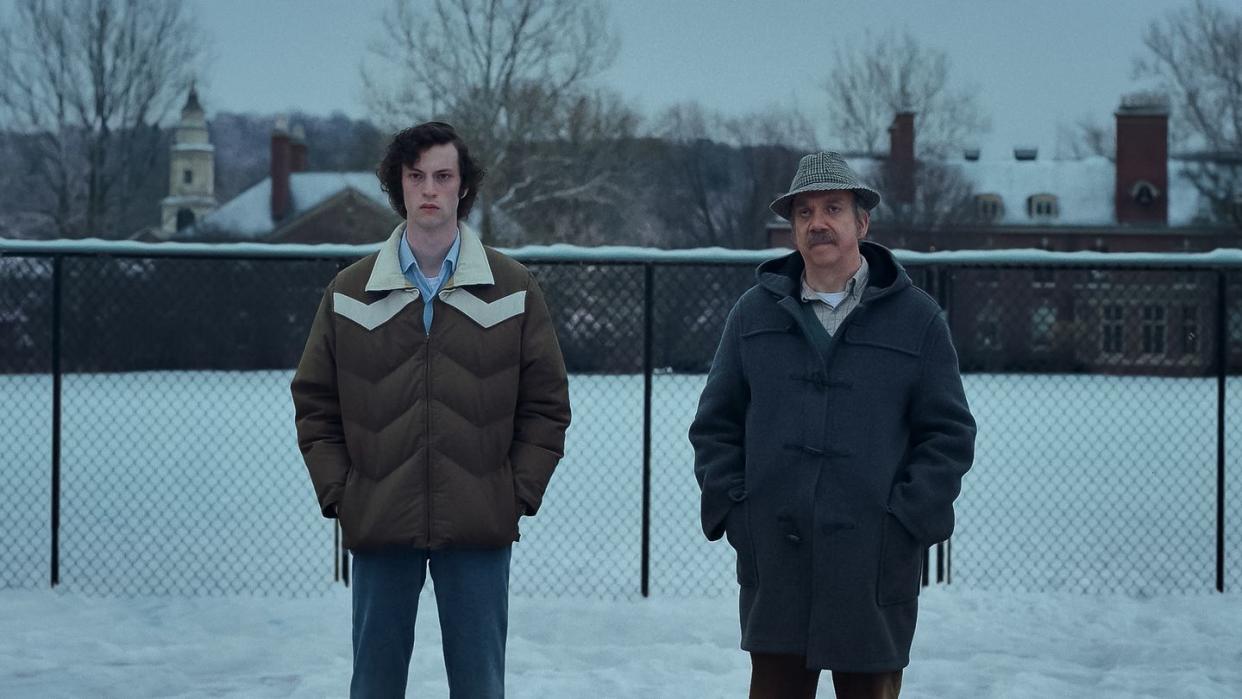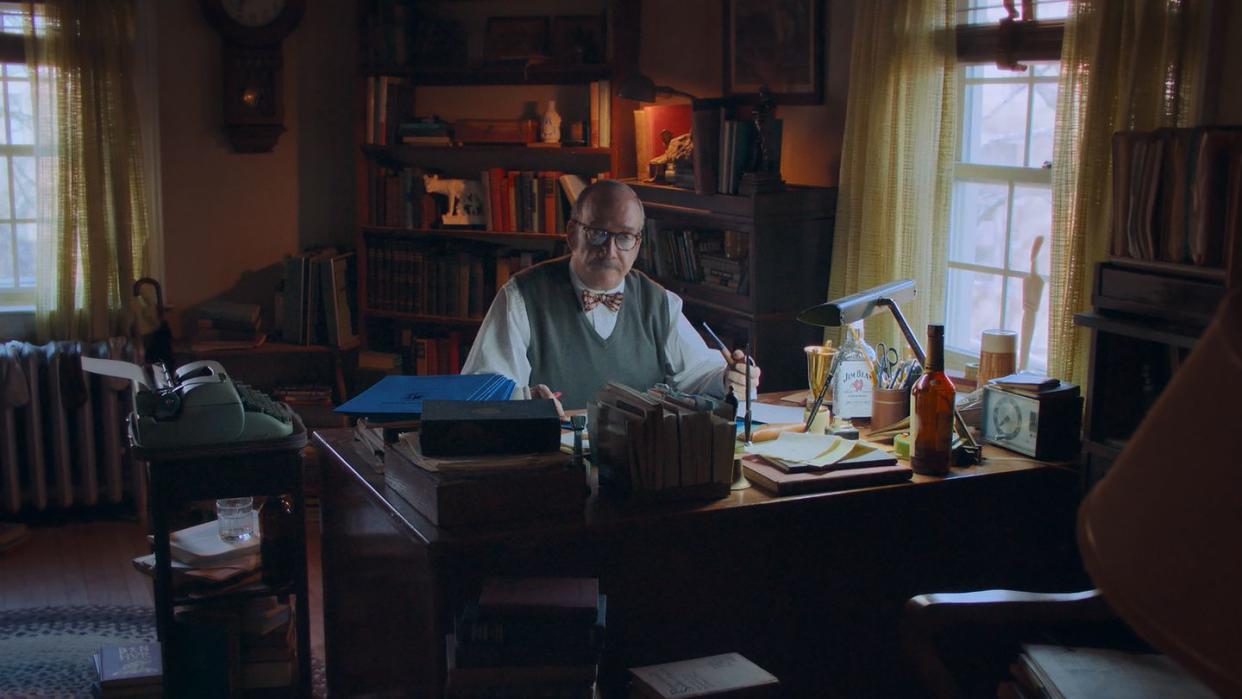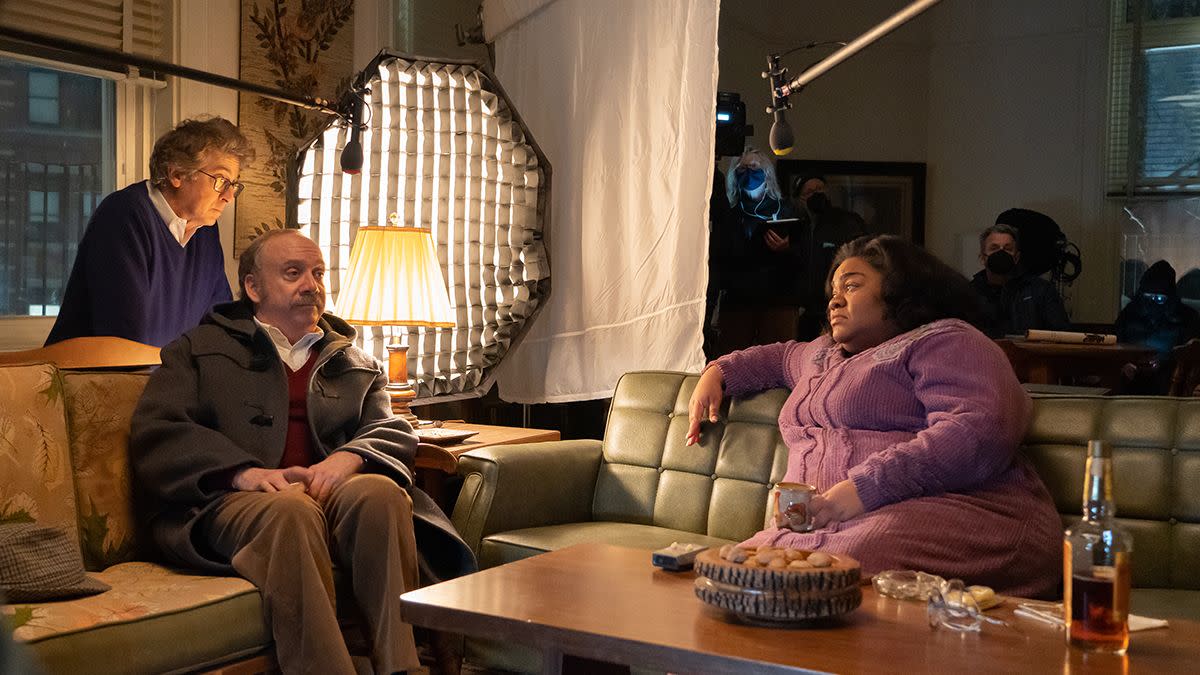How The Holdovers Makes a Star of Boarding School

Barton Academy, the New England boarding school where most of The Holdovers, the funny, touching, and overall brilliant new film by Alexander Payne, takes place, isn’t a real place—but it’s not entirely made up either.
“Here's the deal,” Payne tells T&C. “The fictional Barton Academy of the movie is constructed from five different schools: Groton, Northfield Mount Herman, Deerfield, St. Mark's, and a very beautiful public high school called Fairhaven in Fairhaven, Massachusetts. One has the good cafeteria, one has the good gymnasium, one has the good hallways, one has the good exterior, and one has the good chapel. That's how it's done.”
Could The Holdovers, which follows a student named Angus Tully (the thrilling newcomer Dominic Sessa) who is stuck at school with a grouchy professor (Paul Giamatti) and the academy’s head cook (certain awards contender Da’Vine Joy Randolph) over a 1970 winter break, have shot on constructed sets or at one single school? Probably. But for Payne and his crew to get the right feeling—shabby and exclusive at once—the work of shooting at extra locations was necessary.

“We wished we could find a school that had everything we would need for the time period, but that was just going to be impossible,” says production designer Ryan Warren Smith. “So, we found the pieces that we thought would work together and that we thought would look believable to the audience.”
Payne, along with location manager Kai Quinlan and Smith, spent hours crisscrossing Massachusetts by car to find just the right places. “I'm happy to report that everything in the movie is a location,” Payne says. “There isn't a single set in the whole movie. That doesn’t happen often, even when you do even a location-based movie—you’ve got to build a bathroom or a closet or something because their real-life ones are too dinky to get the equipment and actors into.”
Finding the right school—or schools—was the first thing that the team needed to do. “The schools were the first piece because we were only going to get access to them while students weren't there during holiday break,” Smith explains. “Once we locked in all the schools, then we could start thinking about houses, bars, city streets, exteriors, and things like that.”

But one issue with schools is that even the oldest of them have done some updating—a ’70s-era library might be neighbors with a just-renovated science lab, or old dorms could share space with a contemporary dining hall. When it came to The Holdovers, the story required not only a basketball court, but one that had been updated around 1970—meaning it had to be old and new at the same time. “It was funny,” Smith says, “we found two basketball courts that hadn't been changed too much, but in the script the basketball court has just been redone, so it needed to look new for 1970. So, we knew everywhere what we were going to have to do was take down any of the clear basketball hoops and put up wooden ones, and we’d need to strip everything modern away or cover it up. That would work.”
Making The Holdovers feel believable wasn’t just about finding the right places, but also giving them the feel of the film’s era. “I wanted it to be not just a movie set in 1970, but a movie that looks and sounds as though it had been shot in 1970,” Payne explains. “My aspiration was not making a period film but making a contemporary film pretending we're in 1970.” That meant not just using cars from that year, but from years before (“people have old shit,” Payne says), as well as clothing and homes from years before that all add up to an accurate portrayal of what would have been seen in the film’s place and time.
Another must for making a modern depiction of a 53-year-old story feel accurate? Avoiding contemporary filmmaking favorites. “We did want it to feel like a bit of a time capsule,” Smith says. “So, we didn't want to use any techniques that weren't around then; you won't see any drone shots in the film. And when we're looking for the locations, they just needed to feel real; we didn't want anything over the top so the story could be the star.”
Payne puts it a different way. “The feeling that I was looking for was that it's not a period film,” he says. “I mean, it is a period film, but I didn't want it to feel like one designed by people now. We see a lot of period movies and TV shows and they're just too damn designed. They're too period, they almost rub your noses in how period they are. This had to feel as banal and lived in as if we were making a low budget film then.”
With the final product now in theaters, does the director feel like his mission was accomplished? “Watching the movie,” he says, “you're just like, damn, we did a good job.”
You Might Also Like
